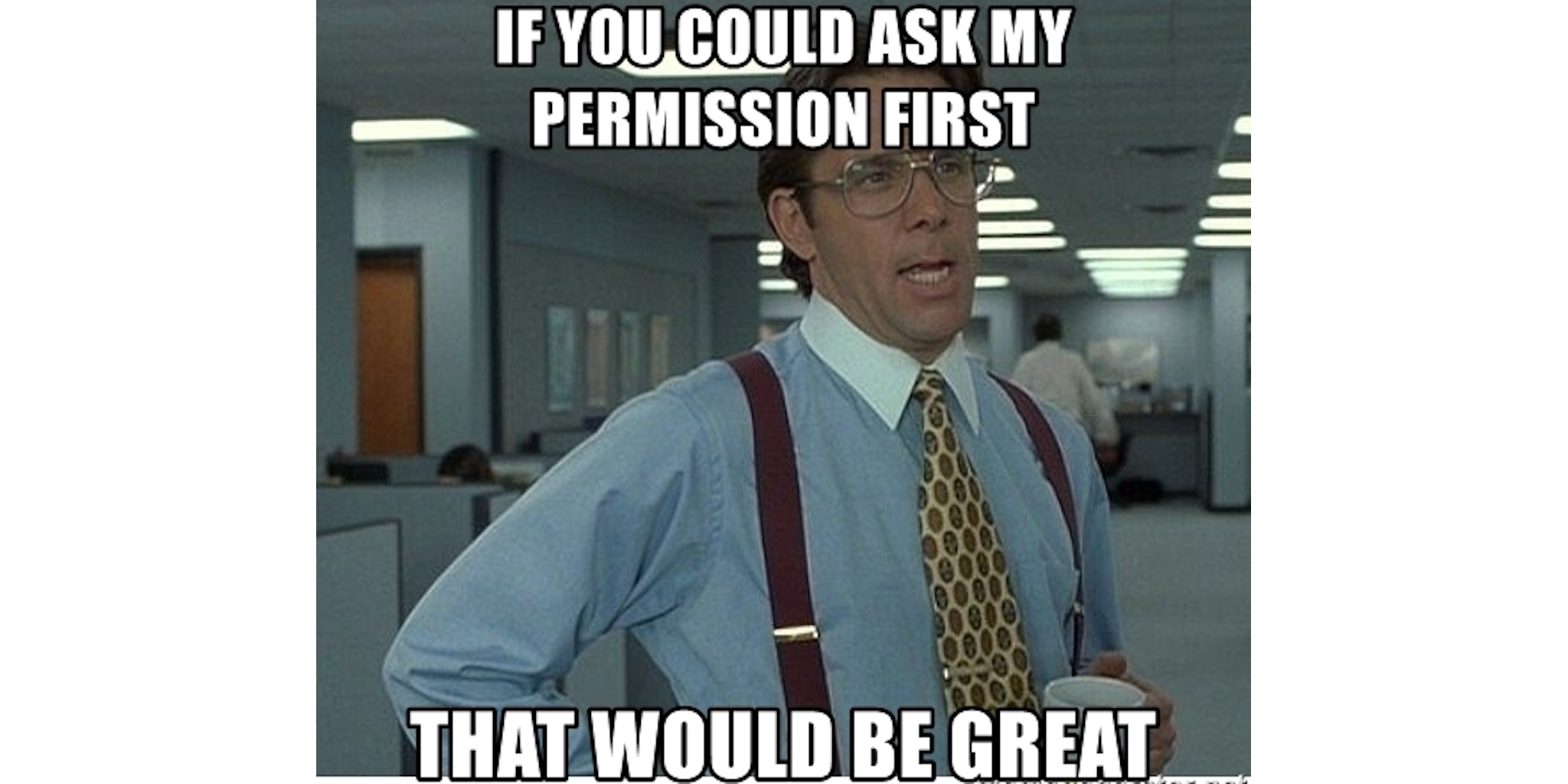
Many people struggle to receive feedback, especially negative or constructive feedback. Are you one of those people? Or maybe you’re a manager and you try to omit giving feedback to avoid uncomfortable situations? Use the tips below to learn how to give and receive feedback effectively.
You feel people aren’t so good with feedback, don’t you?
I’ve often observed this way of thinking in many people I’ve dealt with (including myself 😉). When you get feedback, you tend to think that:
- it’s not fair,
- it’s badly formulated,
- it’s even worse in how it’s communicated,
- and, after all, what rights and qualifications does the person who criticizes you have to do so, huh?
You end up feeling under-appreciated and demotivated.
Usually, when you give feedback, you might feel that it is professional and necessary, and the addressee somehow cannot accept it.
And when you receive feedback, you might have the impression that the person who is giving it is not effective at providing feedback…
Basically: I am okay and those on the other side of the conversation are in the wrong. Of course, this is an illusion. Usually it results from “blind spots” in communication, in self-perception, or in the way you see your own intentions and behavior.
The will to learn vs. being accepted
Receiving feedback sits at the intersection of two important human needs: the need to learn and the need to be accepted. These needs run deep, and the tension between them is not going away. We need to do everything we can to manage this tension and reduce anxiety in the face of feedback and keep learning in spite of the fear.
The key thing you need to know is that receiving feedback well is a skill you can acquire.
And what’s more: receiving feedback doesn’t mean you always have to take the feedback. Sometimes you can say no – but you need to analyze and consider the message, the intentions, and your reaction before refusing the feedback.
Receiving feedback well, on the other hand, means engaging in the conversation with the giver skillfully and making thoughtful choices about whether or how to use the information you get and what you are learning.
And most importantly: it’s about managing your emotional triggers so that you can take in what the other person is telling you, find value in it, and filter out any other issues.

The benefits of receiving feedback
Once you learn to receive feedback well and identify the triggers, you will feel much better – I promise! I’ve been there!
- Your relationships will get richer.
- Your self-esteem will be more secure.
- You will learn and get better at things and feel good about your progress in the end.
Also, when you get good at receiving feedback, even your toughest feedback interactions will come to feel less threatening. And in the workplace, treating feedback not just as something to be endured but as something to be actively sought can have a profound impact.
People who are willing to look at themselves and take feedback are easier to work with and to live with. Being with people who are open to feedback is energizing. When you are like that, your working relations have more trust and more humor. You collaborate more effectively and solve problems more easily. It is the same with personal relationships – the ability to deal with complaints and requests is crucial.
In contrast, working or living with someone who shouts out feedback or responds with defensiveness and arguments is pretty exhausting. People walk on eggshells around such colleagues or friends and live in fear of conflicts.
Three triggers you need to spot
Feedback doesn’t have to be difficult. You can get a lot of positive feedback, and most of us do just fine with it.
Then there’s tougher feedback that leaves us confused, flattened, or attacked. This kind of feedback triggers us. We start to defend, attack, or withdraw in defeat. Understanding our triggers and sorting out what sets them off are the keys to managing our reactions and engaging in feedback conversation with ease.
According to Douglas Stone and Sheila Heen, the authors of the book “Thanks for the Feedback”, there are 3 triggers:
Truth triggers
Truth triggers are related to the topic and the actual contents of the feedback.
The key here is to find out what is really going on: does someone want to appreciate you, evaluate you and show you where you are, or coach you and show you a better solution? Once you understand and separate appreciation, evaluation, and coaching, it is worth considering what kind of feedback you expected in the first place and what you got instead. And then accept that maybe what you received is also valuable.
Relationship triggers
Relationship triggers are related to the person who gives the feedback. The focus shifts from “what” to “who” and how you feel in relation to this person.
The pro tip here is to stay on the merits and separate the feedback (which can be really valuable after all) from the person who offers it. It is very likely that if you have a problem with separating these two things, there are some issues in the relationship between you and the person who gives you feedback. In this case, it is worth focusing on these issues first and waiting to interpret the feedback until you are done.
So before reacting to feedback and getting into a conflict, step back to see the relationship system between you and the feedback giver. Understand the ways you are both contributing to the problem that is prompting you to exchange feedback in the first place.
Feedback and your personal issues are two different topics and should be two different conversations.
Identity triggers
With identity triggers, neither feedback nor the person is the key. It’s your identity.
The truth is that we are not sure what to think about ourselves and the results of our work. The feedback is threatening, and we tend to be off balance. The story we tell ourselves about who we are is under attack. The trick here is to dismantle the distortions and view the feedback as clearly as possible, as we tend to color things up.
Who usually receives feedback well?
According to Stanford psychologist Carol Dweck, there are two basic mindsets: fixed and growth.
If you have a fixed mindset, you believe your abilities are fixed traits and therefore can’t be changed. You see the world as one big test, and every piece of feedback is like a verdict. Thus, even if someone offers you “constructive” feedback and wants to help you get better and encourage, you take it as an assessment of how lame you are.
On the flip side, if you have a growth mindset, you believe that your talents and abilities can be developed over time through effort and persistence. People with this mindset believe that everyone can get smarter or more talented if they work at it. They see themselves as evolving and ever-growing. Feedback shows them how they are NOW. From here, they seek for what to work on next. Feedback is not a verdict – it is a kind of input.
How to give feedback so that it works
We all know feedback is a powerful tool. If offered skillfully, it will help your employee, colleague, partner, or child grow. In a workplace, it improves the levels of trust and communication and strengthens bonds between managers and their teams. The problem is that feedback is often skipped in order to avoid discomfort. Learn how to approach these situations. (Assertiveness training can be of great help for managers that must face these challenges.])
However, if the person who receives feedback tries to embrace the growth mindset and learn to identify and deal the three triggers, and if the one who offers feedback does so skillfully, the world will be a wonderful place to live! 😃
Here are our tips to giving effective feedback that doesn’t hurt or cause conflict:
1. Ask for permission first
Make sure to ask the person if and when they’d like to receive your feedback.
Your comments can bring your colleagues' performance to a higher level. However, it will only work if the recipient is ready to accept your feedback and work on it.
Note that sometimes someone will refuse to receive your feedback – be prepared to accept it.

2. Give feedback on a regular basis
As we mentioned, many of us find the feedback process dreadful, and as a result, people delay face-to-face feedback sessions. That’s a dead end. Don’t wait for a quarterly review or monthly summary. It is best to offer feedback immediately following an event – it will have greater impact. If you wait too long, events will be forgotten.
The best thing to do is to share feedback regularly. This way, performance issues will be corrected in real time and the process of offering feedback and receiving feedback will be normalized. It will be as easy as talking about the weather after some time.
3. Balance critical feedback with praise and avoid “BUT”
The most useful feedback balances both positive reinforcement and critique. If you get stuck on corrective feedback, your employee or colleague is likely to get defensive and shut down rather than engage in problem-solving.
Share positive feedback with your employees regularly so they know the things they should continue doing and not only what they should correct. Diverse, regular feedback is a key to building strong relationships in a workplace.
However, it might not be effective to give positive and negative feedback that at the same time, even though some experts recommend the “sandwich approach." Helping someone improve should always be the goal of feedback, but squeezing corrective feedback between two pieces of positive comments won’t work. This method undermines your feedback and trust and causes confusion.
Even further, I know that sometimes it’s tempting to say: “I think you did a great job, but…” You may think this will soften the negative impression, but it will have the exactly opposite effect.
Tip: When you really need to deliver both positive and constructive comments, try to list your points completely separately: “First of all…” – then, wrap up on this issue, and then continue: “Secondly, it would be…”
4. Focus on behavior, not personality
Focus on an employee’s performance (what they do), rather than on their personality traits (what they’re like). Talk about the situation, not the individual. It will help the receiver not to get defensive and will direct the conversation towards finding solutions.
Tip: Use the past tense when delivering feedback. You want to refer to a specific behavior in the past. The use of the present tense would imply that your colleague demonstrates this type of behavior all the time.
5. Have a conversation
It is very important to let the receiver respond to your feedback and ask follow-up questions. Remember the three triggers. They need to have space to identify them and deal with them.
Once the issue is clear, then you two can work together to find a solution or a course-of-action.
After some time, you might want to follow up and show appreciation if you see improvement. This will show the person that you care about their efforts and success.
6. Consider your own intentions
It is obvious that effective feedback is about development and not about making someone feel bad or flattened. The kind of feedback that aims only to punish or denigrate someone is absolutely counterproductive.
Thus, before sharing your comments, take some time to define your intentions. Do you want to give feedback as a way of blowing off steam? Or maybe you want to show off your position or skills? Well, that kind of feedback won’t lead to any improvements.
Effective feedback only comes from a genuine desire to help someone get better.
7. Keep it private (always?)
Don’t criticize publicly – ever – warns David Hassell, CEO of 15Five. He notes that this can be humiliating, and besides – some people simply don’t like being the center of attention.
At Nozbe, we try to be as transparent as it gets. Most of our projects in the Nozbe app are shared and accessible for everyone on the team. This way, when someone offers me some corrective feedback (in a written form as a task comment in the Nozbe app), all other team members will read it and perhaps be motivated to add their constructive comments too. Such an approach has its pros and cons.
I am really curious what you reckon and whether you think that feedback should be delivered in a one-on-one conversation or message exchange or if sharing comments in public is more effective?



